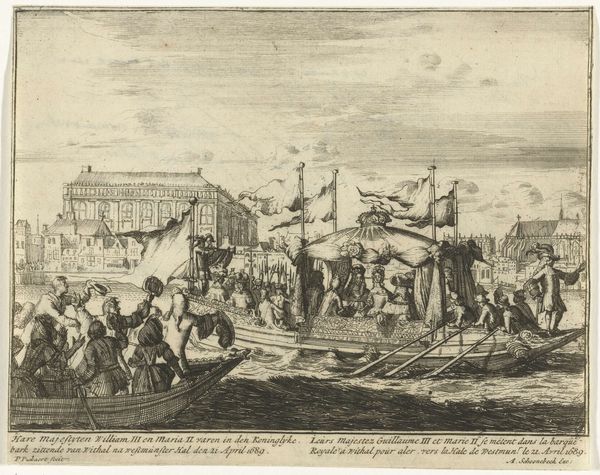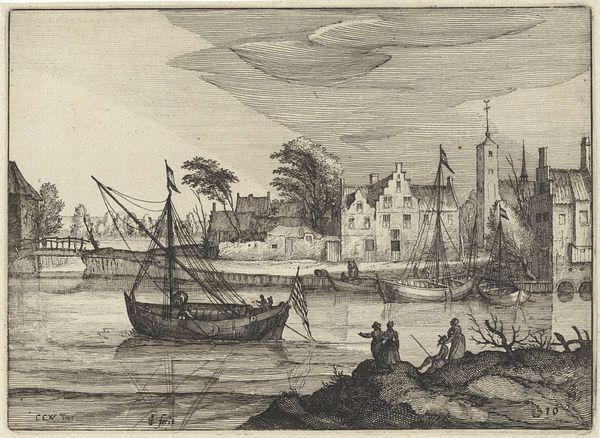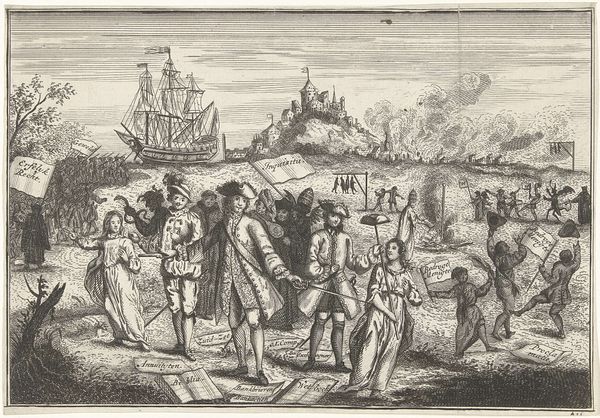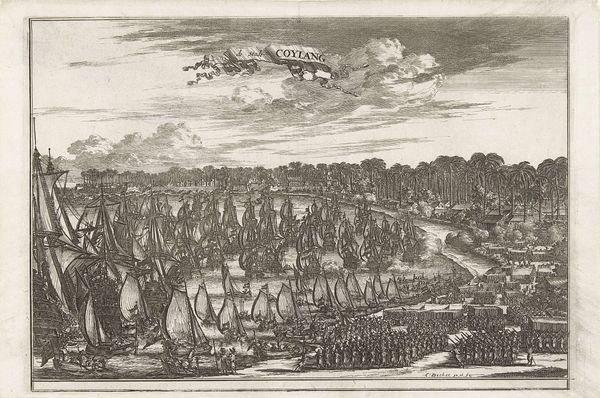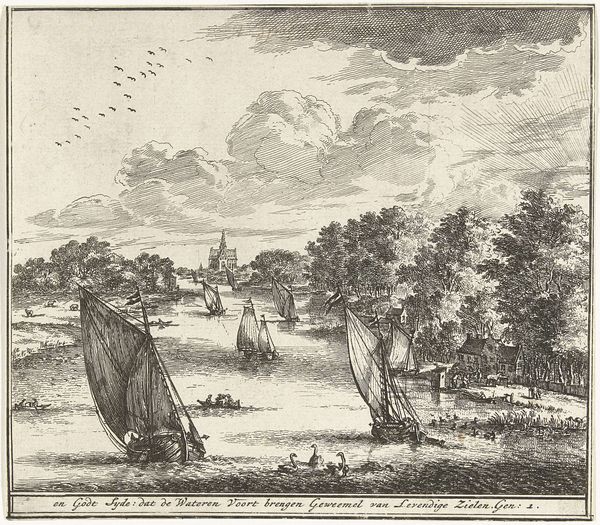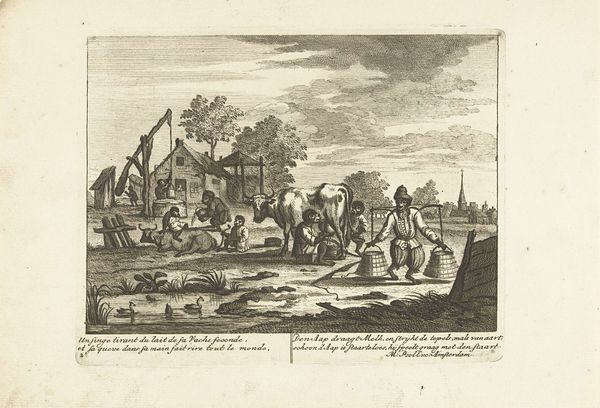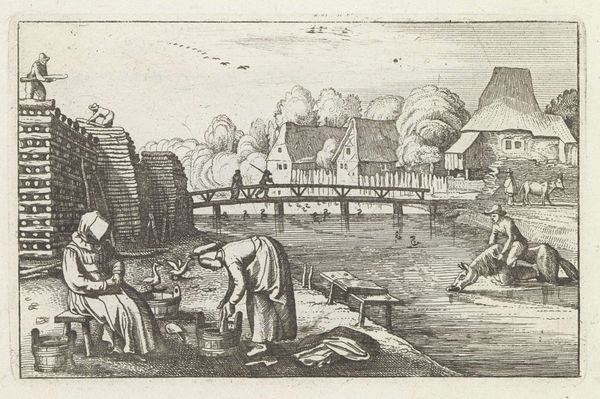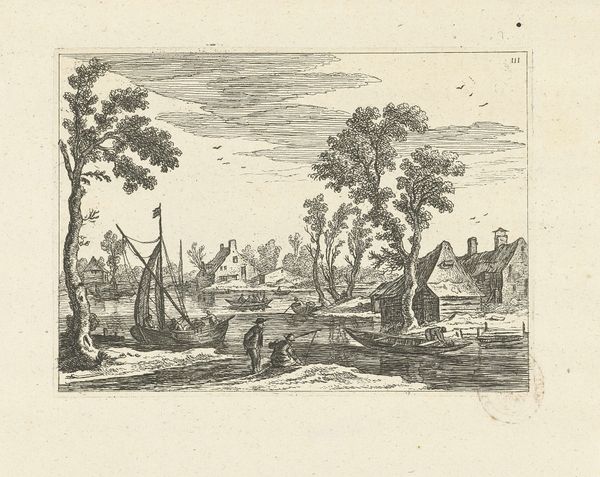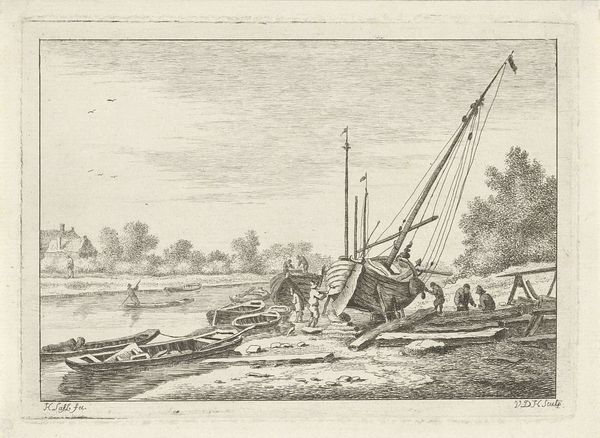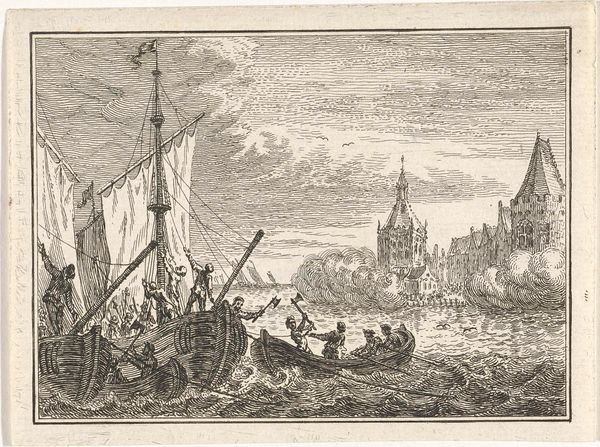
drawing, print, engraving
#
drawing
#
dutch-golden-age
# print
#
landscape
#
genre-painting
#
engraving
Dimensions: height 80 mm, width 124 mm
Copyright: Rijks Museum: Open Domain
Curator: "Boerenerf aan het water," or "Farmyard on the Water," is the title given to this intriguing drawing from the Rijksmuseum collection, whose maker remains anonymous. The print's creation has been tentatively placed somewhere between 1600 and 1833, placing it perhaps within the Dutch Golden Age. It really jumps out—the etching's density and the way it details everyday rural life creates a sort of miniature world. What's your immediate response to it? Editor: Immediately, I'm struck by the visual tension between the chaotic foreground activity—the boaters, the haphazard fencing, the crumbling cottage—and that stoic, almost dreamlike castle presiding over the scene. The castle perched high on the hill feels almost mythic in its calm observation. It’s a strong symbolic contrast. Curator: It’s worth considering how images of rural life often served specific ideological functions. The image clearly draws from genre painting traditions, but situating the artist and audience allows us to explore themes related to labor, class and perhaps romantic notions about "the simple life". This wasn't simply a snapshot; it likely speaks to the political context of the period. Editor: Absolutely, the juxtaposition is key to interpreting its symbolism. The waterways, the bridge and that lonely figure—they're recurring motifs in Dutch art. One sees them so frequently they appear as cultural touchstones offering a comforting connection with their world and past. Even the presence of livestock hints at a self-sufficient community, rooted to the land, both physically and spiritually. Curator: Considering it's a print, circulation and reception are really crucial elements. If this image circulated amongst a particular demographic it allows scholars to extrapolate about attitudes toward rural labor and Dutch national identity. This genre painting’s content, material, style and period give art historians the opportunity to ask so many valuable questions about culture and political dynamics. Editor: The longer I look, the more that duality imprints itself. You're right, its impact stems from how it fuses everyday life with these resonant cultural symbols. It truly offers insight to the long shadows the past casts on our perceptions. Curator: Precisely, I am particularly struck by the image as evidence of a shared human condition. The past can allow for a unique and useful experience, through the understanding of both change and endurance. Editor: Absolutely. It’s those subtle reminders that history's weight shapes even the lightest artistic gesture.
Comments
No comments
Be the first to comment and join the conversation on the ultimate creative platform.
